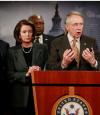Site Search
Copyright © 2024 Highbrow Magazine
by Christopher Elliot
Many service workers have come to depend on gratuities to earn a living. Squeezing a tip out of a customer before the meal is served or under the watchful eye of your server is hardly the fault of the employee. But the employees are likely to pay for these misguided policies.
Read more...by Lee Polevoi
At the outset of Burma Sahib, the new novel by esteemed travel writer Paul Theroux, a woman and her husband aboard the ship Herefordshire take an interest in another passenger—a young man standing at the bow looking out to the sea. Who is he? Where is he going?
Read more...




























































































































































































































































































































Copyright © 2024 Highbrow Magazine






